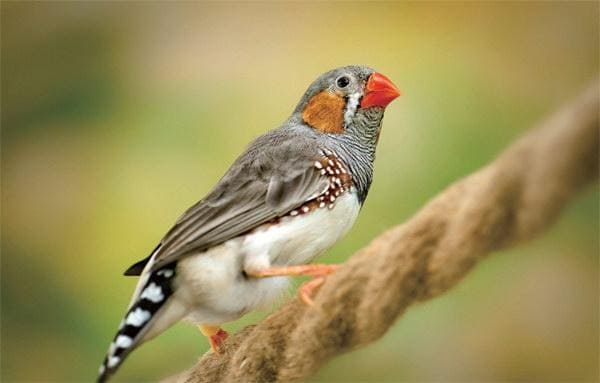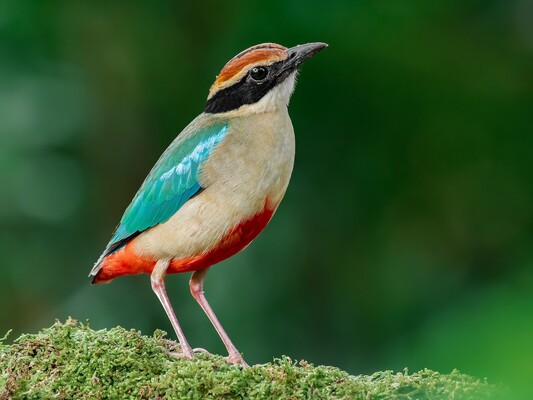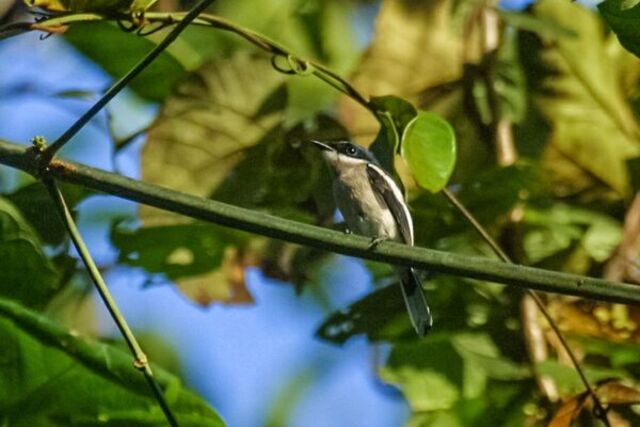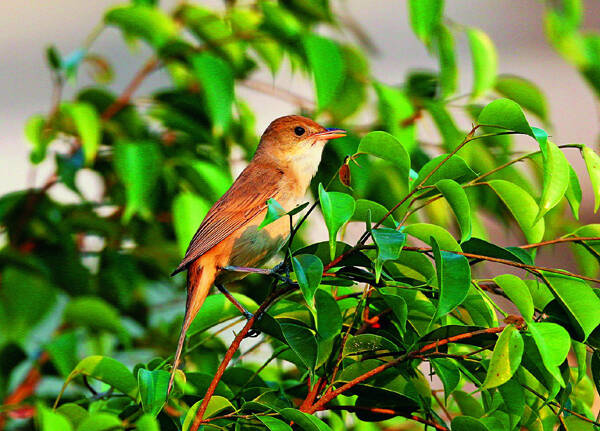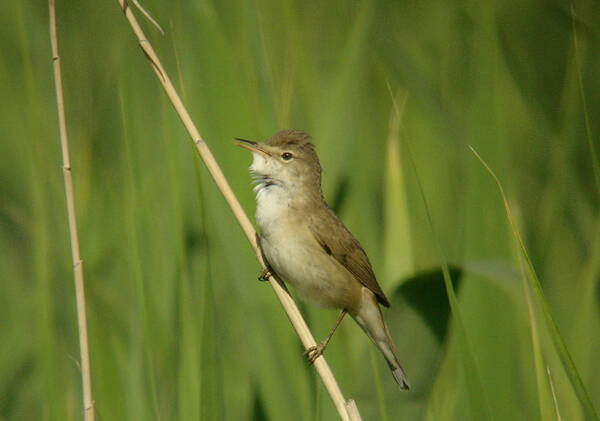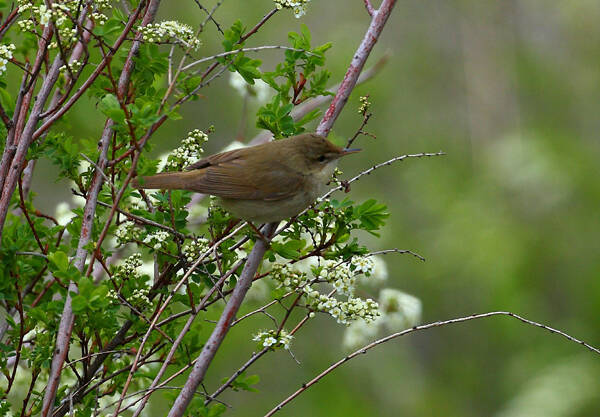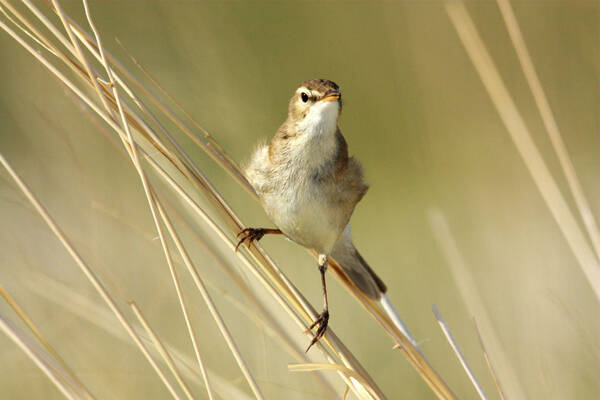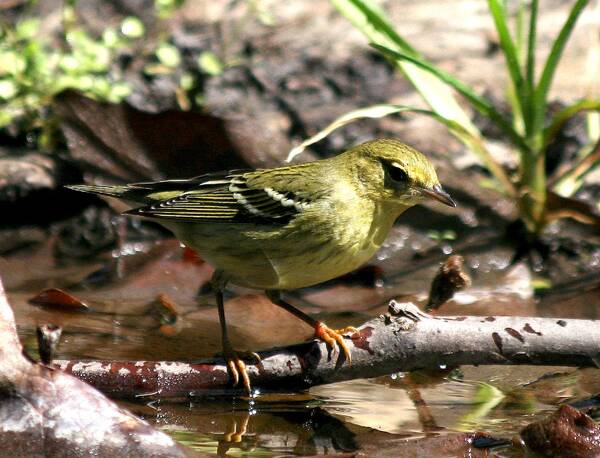Garrulax canorus
IUCN
LCBasic Information
Scientific classification
- name:Garrulax canorus
- Scientific Name:Hwamei,Thrush,Chinese Thrush
- Outline:Songbird
- Family:Passeriformes Leiothrichidae Garrulax
Vital signs
- length:23cm
- Weight:54-75g
- lifetime:9-15year
Feature
Its singing voice is pleasant to the ears, and some people call it the "forest singer" or "bird singer".
Distribution and Habitat
In China, it is widely distributed in the Yangtze River Basin and the central, southwestern, southern and southeastern parts of China to the south, including Hainan Province. There are escaped populations in Taiwan Province. Abroad, it is distributed in the northern part of the Indochina Peninsula. It is the city bird of Guangzhou.
It lives in low-altitude forests in the south. It is secretive and good at singing. It is one of the birds facing the greatest capture pressure in China.
The origin of the thrush generally has a subtropical climate, which is relatively warm, with sufficient sunlight and abundant rainfall. Most of these areas have crisscrossing rivers, numerous reservoirs and streams, rich freshwater resources and high humidity. Therefore, these areas are lush with vegetation, and there are more insects, plant seeds and plant fruits, which are very suitable for the reproduction, growth, life and habitat of the thrush.
Appearance
The whole body is brown with fine black vertical stripes, the vertical stripes on the top of the head are obvious, with white eye circles and eye stripes behind the eyes, extending to the ears, with a small amount of light blue naked skin around the eyes, and the lower abdomen is grayish white. The iris is light yellow-brown, the upper beak is gray in keratin, the lower beak has yellow teeth, and the feet are pink-brown.
Details
The thrush is a medium-sized bird in the class Aves and family Thrush. Body length is about 23 cm. The upper body is olive in color, the top of the head to the upper back is tan with black vertical stripes, the eye circles are white, and a narrow stripe is formed along the upper edge and extends back to the occipital side, forming a clear eyebrow line, which is very eye-catching. The lower body is brown, with black vertical stripes from the throat to the upper chest, and the middle part of the abdomen is gray. The iris is orange or yellow, the upper mouth is orange, the lower mouth is olive yellow, the tarsometatarsus and toes are yellowish brown or light in color.
It inhabits the bushes on hills and bushes or bamboo forests near villages. It is alert and timid. It often forages in the grass under the forest and is not good at flying over long distances. During the breeding season, the male bird often hides alone among weeds and branches and sings very well. The voice is very loud and the song is melodious and melodious, which is very beautiful. Omnivorous, it mainly feeds on insects, especially during the breeding season; it also eats grass seeds and wild fruits.
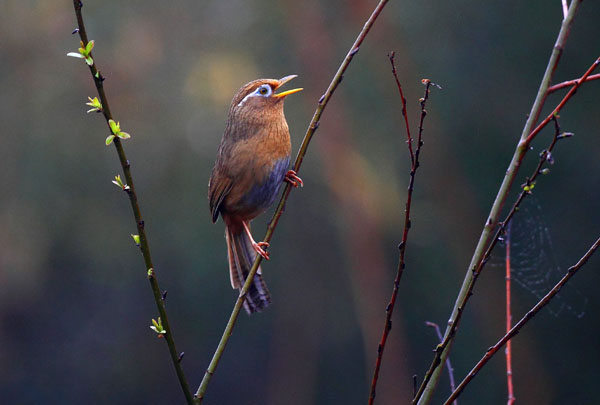
Its two eyelids are round. Due to the different visual pigments in the two eyes, various colorful "eye sand" occur. There is a layer of nictitating membrane on the outside of the eyeball, which is open at ordinary times and closed tightly during flight to protect the eyeball. The outermost layer of the eyeball has an eye ring, which also serves to protect the eyeball. Behind the eyes, there are concave ear holes as big as soybeans, surrounded by ear feathers, which help to collect sound waves.
As a resident bird of origin, the thrush lives in a relatively fixed area all year round and generally does not migrate far away. Its habitats are mainly shrubs on hills and shrubs or groves near villages. It is also active in broad-leaved forests, coniferous and broad-leaved mixed forests, coniferous forests, bamboo forests and shrubs near countryside at an altitude of more than 1,000 meters. . Thrushes often move alone in the wild, sometimes in small groups. Thrush loves cleanliness and hygiene, and bathes almost every day throughout the year. Therefore, there will be no thrush where there is no water and woods. The thrush is both clever and timid, and likes to hide. It often flies in dense forests, or stands in the branches of dense trees and sings.
It is good at singing, almost non-stop from morning to night, and its songs are melodious and melodious. Especially during the breeding season, male birds are especially good at singing. Their songs are also more melodious and melodious, pleasant and varied, and the ending sound is slightly like "mo-gi" -yiu-", so the ancients called the cry "Ruyi Ruyi".
It is omnivorous, but its food is mainly insects throughout the year, especially during the breeding season, most of which are agricultural and forestry pests, including locusts, stink bugs, pine caterpillars, beetles, Lepidoptera Tianshe moth larvae and other moth larvae. They are all its capture objects. Plant foods are mainly seeds, fruits, grass seeds, wild fruits, strawberries, etc. During the breeding season, parent birds capture large quantities of insects to feed their chicks. During the non-breeding season, after the "beginning of autumn", there are fewer insects and they feed on various plant fruits, weed seeds or tender vegetables. In mountainous areas, before the arrival of frost and snow, thrushes will collect fruits and seeds and store them underground in caves or beside rocks as food for the winter. Therefore, farmers in mountainous areas have a proverb: "The thrushes store more food, and the heavy snow will last longer." In early spring, they occasionally peck at the seedlings of bean crops and corn.
The thrush is a specialty bird in China, mainly distributed in China. It is not only an important agricultural and forestry bird, but also has a melodious and melodious song. It can also imitate the songs of other birds. It is known as the "King of Babblers" at home and abroad. Therefore, a large number of them are not only captured and raised by private citizens for viewing every year, but also exported abroad in large quantities, resulting in a significant reduction in the population. Protection should be strengthened and hunting should be controlled.

